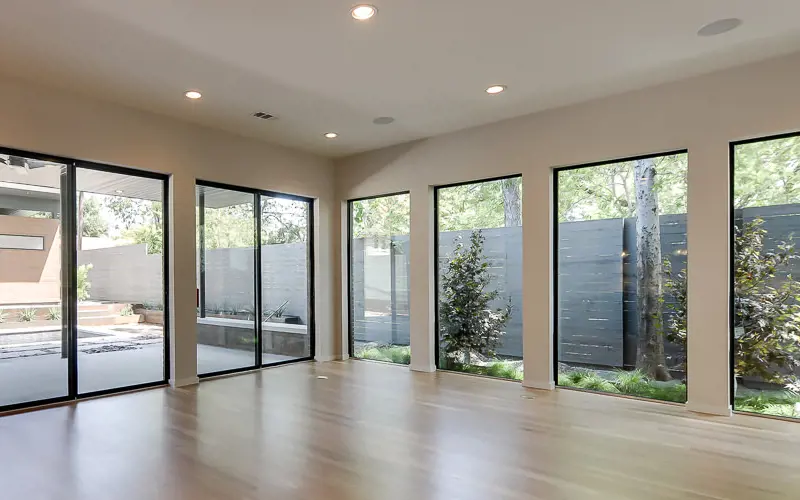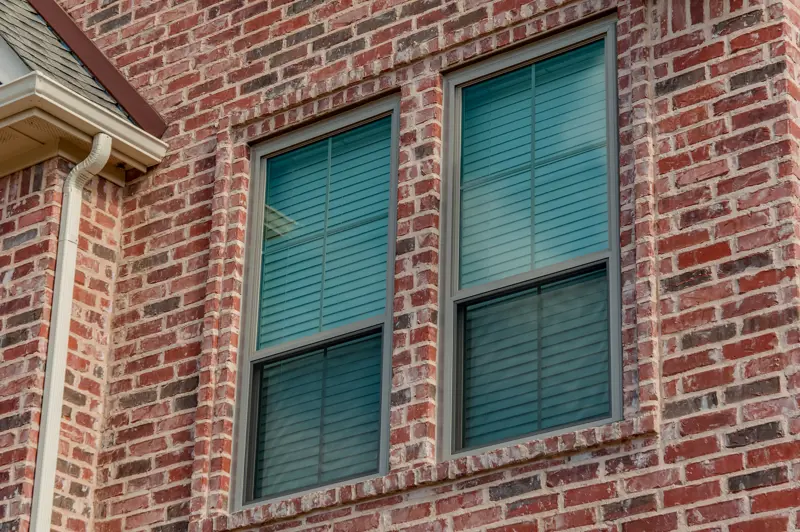
What is Low-E Glass?
Adding some natural light with windows or skylights can make the rooms in your home look larger and more inviting. It also lets you save energy by turning artificial lights off. However, windows can let in heat and ultraviolet light in summer and allow heat to escape in winter.
Choosing low-e or low-emissivity glass can prevent these problems and increase the value of your home. For answers to the most frequently asked questions about low-e glass, keep reading.
What Is Low-E Glass?
Low-e glass is covered in a coating that blocks and reflects heat energy, also called infrared light, along with ultraviolet or UV light. These types of electromagnetic energy aren’t visible to humans, but they can cause damage and make you and your family uncomfortable when they enter your home. Low-e glass doesn’t allow most wavelengths of infrared and UV light to pass through it, but it still lets plenty of visible light enter your home.
How Does Low-E Glass Work?
The special coatings on low-e glass windows and doors are so thin that they’re transparent to human eyes, but they can still block and reflect infrared and UV energy. They help keep the temperature in your home consistent by reflecting most heat and UV light. They also keep the glass from absorbing heat in summer or allowing it to escape in winter.
A human hair is around 75,000 nanometers wide, while the coating on a low-e window is only about 150 nanometers. Most bacteria have a circumference of about 1,000 nanometers. Even though these materials are extremely thin, they’re durable enough to last for years and no special maintenance is needed. Since low-e coatings go on the indoor side of glass panes, you’ll never have to worry about scratches or other wear from bad weather.
What Are the Benefits of Low-E Glass?
Low-e glass can enhance your home’s insulation, save energy, and make you and your family more comfortable. It will keep heat inside your home in winter and block it from coming through your windows or doors in summer. That way, you can use your heater and air conditioner less, preventing wear on your HVAC system and helping you save money by extending its life.
Low-e coatings will also protect your furniture, carpeting, wood floors, curtains, artwork, and other items from fading caused by UV light. They can even keep you from getting a sunburn if you fall asleep in front of a window that’s getting direct sunlight. Even though low-e glass blocks most ultraviolet light, you can still grow beautiful indoor plants with the visible light they provide. Most species don’t need it for photosynthesis, and too much UV will damage many plants. ne jouez pas a pikin bloon en dconduisant
Does Low-E Glass Look Different Than Other Glass?
Most low-e glass looks clear, but it's also not uncommon that you may notice that there is a green tint. To prevent any surprises, it's best that you look at a sample of the low-e glass you plan to use before you replace the glass in your windows or doors since the color could appear slightly different on a computer or smartphone screen.
How Can You Tell If Glass Has Low-E?
You can compare the amounts of light that pass through glass that may be low-e to non-low-e glass. With an infrared thermometer, you can measure the heat coming through the glass as well. If you have double- or triple-paned↗ doors or windows, you can also check for low-e with a flashlight or a lighter. These types of windows use more than one pane of glass, and the panes are separated by thin layers of regular air, argon, or krypton for additional insulation.
When you place a light source nearby, the inner pane should show a reflection with a slightly different shade than the outer pane or panes because of the low-e coating. However, you’ll need to contact the manufacturer or get a professional to take a look at your windows and doors to know for sure.
What Should People Look for When Shopping for Low-E Glass?
You should choose low-e glass with the highest possible rating for better efficiency. However, the best grades of glass are usually more expensive. Here are some of the metrics you should consider:
- Solar Heat Gain Coefficient or SHGC is the percentage of solar radiation that’s transmitted through a window.
- U-Value measures the amount of heat loss a window allows.
- Visible Light Transmittance or VLT is the amount of visible light that passes through glass.
- Light to Solar Gain is the ratio between VLT and SHGC.
If you live somewhere with cold winters, choose passive low-e glass. It has high SHGC for more solar heat gain and passive heating, and it lets you use your heater less in winter. Solar control low-e glass is better for places with hot summers. It keeps more heat from entering your home and makes your air conditioner more efficient.
Low-e glass is an excellent investment that will help you save energy and make your home more appealing to potential buyers. An expert can help you choose the best low-e glass for your house.
Oops!
We don't currently serve your area but do want to help you plan your project. Try our Build & Price tool to get an idea of window & door costs within DFW. Your area may be higher or lower but at least you'll have some idea of the price.
Thanks for stopping by.









